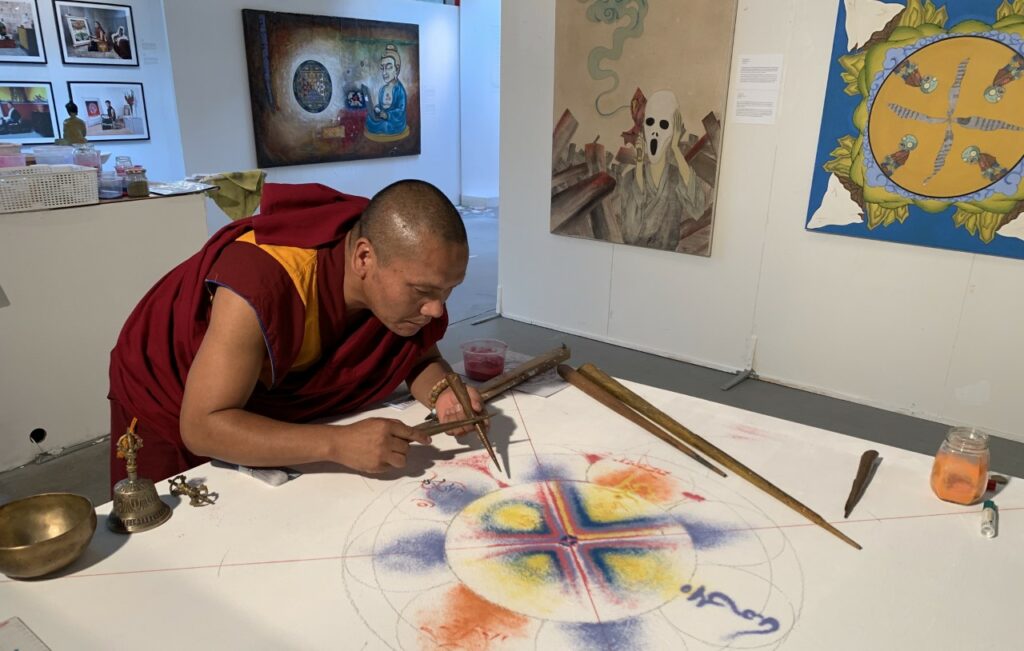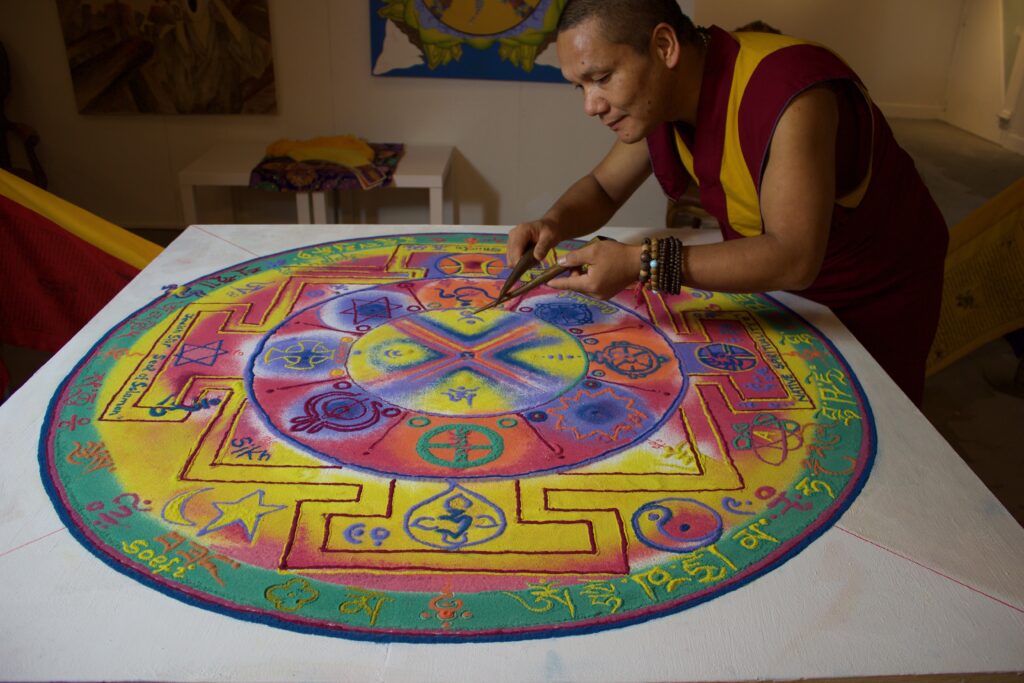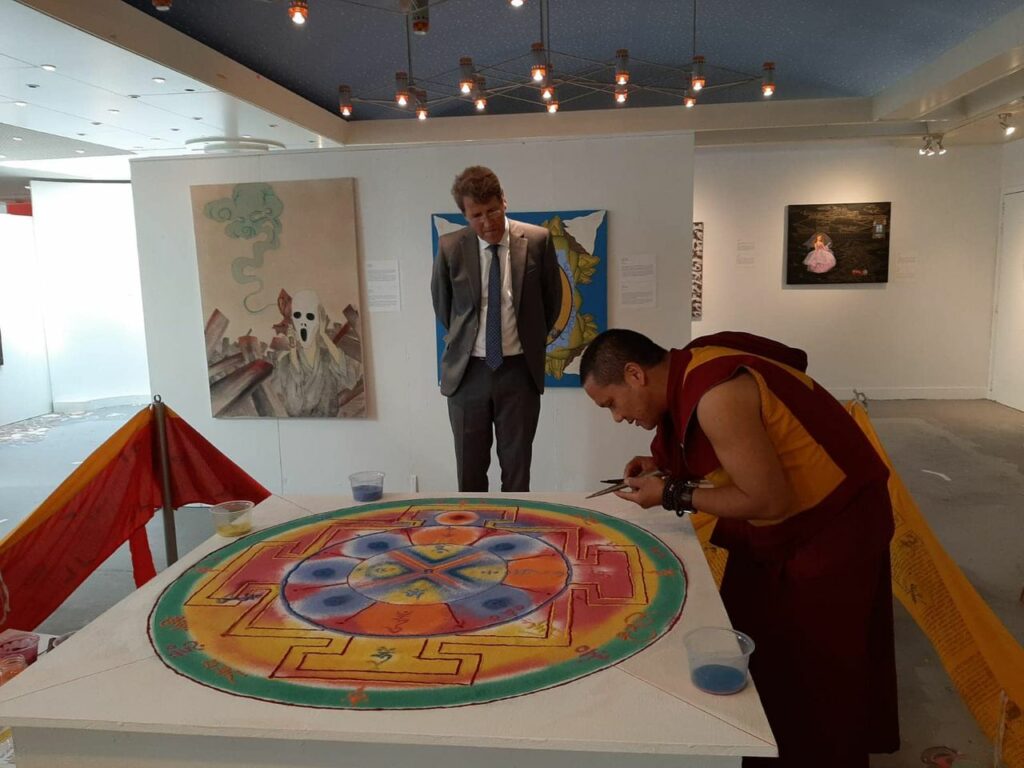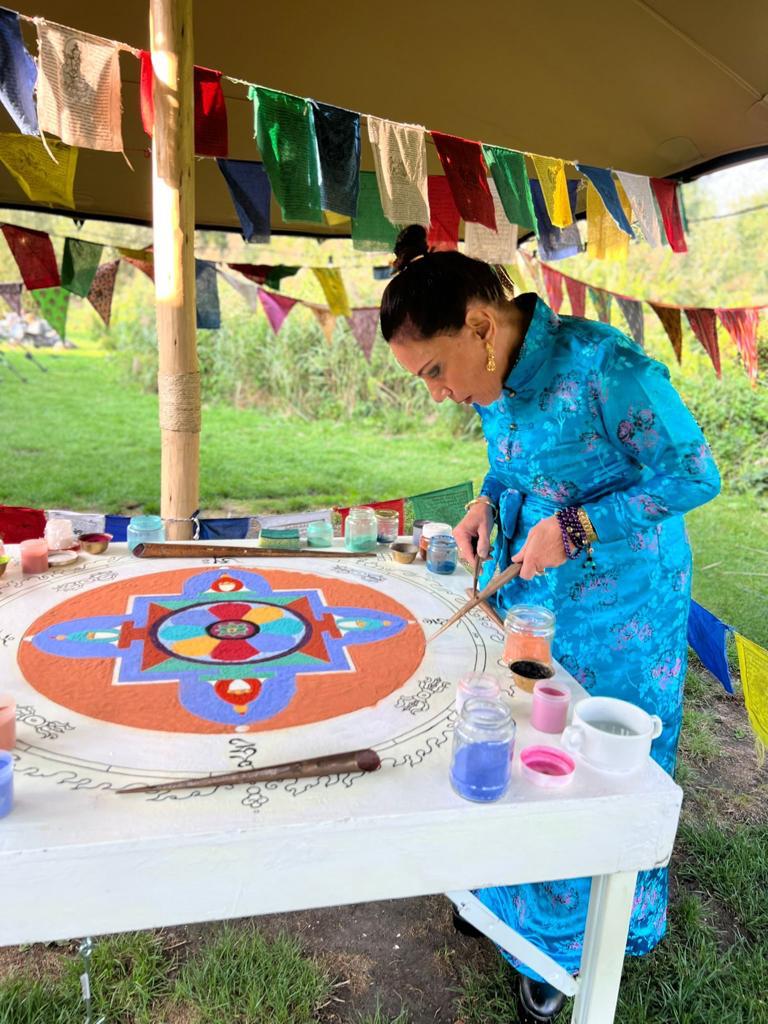Mandalas are made by Tibetan Monks in their monasteries and have to be destroyed upon their completion, giving to the public a lesson of attachment, acceptance and the impermanence of life. They are made by coloured mineral sand with special metal tubes called Chak- Pur

Artists mandala includes a circle, a central point, and some form of symmetry. Usually there are 8 petals in different colors plus 4, which are considered sacred and would all together represent the major religions in the world with their symbols; these shapes are facing the corners of the Earth and form together a lotus flower. Different geometrical parts on a mandala, would also represent the seasons and the months, the continents, the sun and the moon. Symbols representing love, are designed many times in the center of a Mandala as love lives in the center of all religions. Because love is the fundamental basis for all
An opening ceremony for the Sand mandala is usually taking place at the beginning of the and a closing ceremony is taking place upon its completion. That day, the Mandala is destroyed to symbolize the impermanence of all in life.

Celebrating the healing Mandala is a great event and an attempt to bring peace and harmony through a form of Art into our inner self. Yet this harmony, is extended into the outer world with a mind of love and compassion, which is the basis, in developing feelings of harmony, love and compassion across the planet. This is a way to remember that death can come any time and all is impermanent in life. Just as Mandala ends, the circle of life ends. A great practice to cultivate all our positive qualities and all our virtues hidden in ourselves.


Lama Tashi Norbu along with Artist Leela Skitsa while creating Tibetan Sand Mandala with the twist of Contemporary touch. The Artist Lama Tashi hasspent nearly half of his life in the West where he studied the Contemporary artistic medium; and now he blends the knowledge he gained in the West with the knowledge he gained in the Tibetan Traditional Art Schools and Tibetan Monastic world, which he experienced in the past. Both Artists sand Mandalas represent harmony and the importance of all religious traditions to respect one another, since the potential of all is to create good human beings. The Mandala sends a message of global healing during these difficult times of the Humanity of global concern and wars across the planet. Mandala is a tool for visualization and meditation and every single detail on it, the design, the colors, and placement of symbols, is deliberate!




